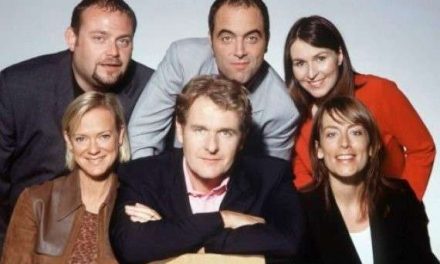In 2013, Carol Vernallis published a brilliant book called Unruly Media: YouTube, Music Video and the New Digital Cinema. In it, she eloquently describe the ‘media swirl’ which characterises the contemporary audiovisual landscape: characterised by heightened sonic and visual aesthetics in music and YouTube videos, these forms are impossible to sort into neat generic categories. Instead, each form’s ‘influences ripple out maddeningly, creating interferences, blendings, loosenings of boundaries’ (3). Vernallis and Oxford University Press had the good sense to put Beyoncé on the cover, with the author dedicating a chapter to ‘Video Phone’ as exemplary of the reconfigured music video form.
Beyoncé’s general approach to media is indeed ‘unruly’. In 2013, she released her fifth studio album to iTunes with no warning and a self-title (confusing the norms of chronology). The album was accompanied by a full complement of non-linear videos. Fast forward three years and Beyoncé releases Lemonade, which has been described as a visual album, a video album, and a conceptual film (sometimes all in the same breath). All and none of these labels seem accurate. The inability to firmly label Lemonade is no doubt a part of its appeal, success, and context; located in the midst of the media swirl.
Lemonade premiered on HBO as a 65-minute film on April 23. It was also released on Tidal, the subscription-based, high fidelity music and video streaming service owned by Beyoncé’s husband, Jay Z, and his company Project Panther. You can download a purely audio version (45 minutes) of Lemonade for €17.99 on iTunes or Tidal. Or you can sign up for a free trial of Tidal and watch/listen to it that way. Tidal hasn’t been doing too well, and the cynical among us might see Lemonade as a well-planned strategy to draw the masses to the site (where subscription fees are up to €19.99 per month). After all, everything Beyoncé touches turns to gold, and Lemonade quickly became the fastest selling album of the year. The release has even led to a spike in the sales of actual lemonade.
Lemonade’s two output forms make for a fascinating study in transmedia storytelling, as well as instantaneous adaptation. Given that the visual album is fifteen minutes longer, we might even interpret the audio version as a pure ‘soundtrack’ to the corresponding film. Because although certain ‘cinematic’ properties, such as voiceover narration, are edited out of the audio version, some of the diegetic sound effects remain. Indeed, video essayist Nelson Carvajal has already created a seven-minute work charting the potential cinematic influences on Lemonade. For him, the work of Terrence Malick is the most overt and sustained inspiration. As Carvajal notes, one of Lemonade’s directors (Kahlil Joseph) even shot B-roll for Malick’s To The Wonder.
Lemonade’s premiere on HBO can also be seen as a continuation of HBO’s recent investment in music-focused programming; including the music documentaries Cobain: Montage of Heck and 2013’s Beyoncé: Life is But a Dream. While Lemonade can hardly be described as a documentary, it does further chronicle Beyoncé’s personal life by including intimate sequences with her (alleged) unfaithful spouse. And, like HBO’s performer-focused music documentaries, it assumes fans have an insatiable appetite when it comes to watching their idols on-screen.

Returning, then, to Vernallis: from the perspective of media classification, Beyoncé’s most recent audio(visual) outputs are again unruly. Vernallis’ description of the media swirl’s rippling ‘interference’ between categories also brings to mind another form of interference; that of sound waves, which occurs when two waves meet while traveling along the same medium. In physics, the outcome of this is termed ‘constructive’ or ‘destructive’ interference. With the latter, the two pulses move in opposite directions and, upon meeting, they cancel each other out. Constructive interference, on the other hand, occurs when the two waves overlap and add together to form a bigger one. With Lemonade, Beyoncé is simultaneously working in two media formats (audio and audiovisual). And yet, on a metaphorical level at least, the idea of waves overlapping to constructive effect seems apt. HBO, Tidal, and iTunes are all effectively distributing Lemonade to their respective audiences; juicing those lemons for all that they’re worth. What remains to be seen is whether this will result in a tidal wave of influence, for Tidal, or for the future of visual albums more generally.
Jennifer O’Meara is an Assistant Lecturer in Film Studies at Maynooth University, Ireland. Her recent publications include contributions on podcasts, film posters, music and dialogue to Frames Cinema Journal, The Journal of Digital Media Arts and Practice, The New Soundtrack, and Cinema Journal.





